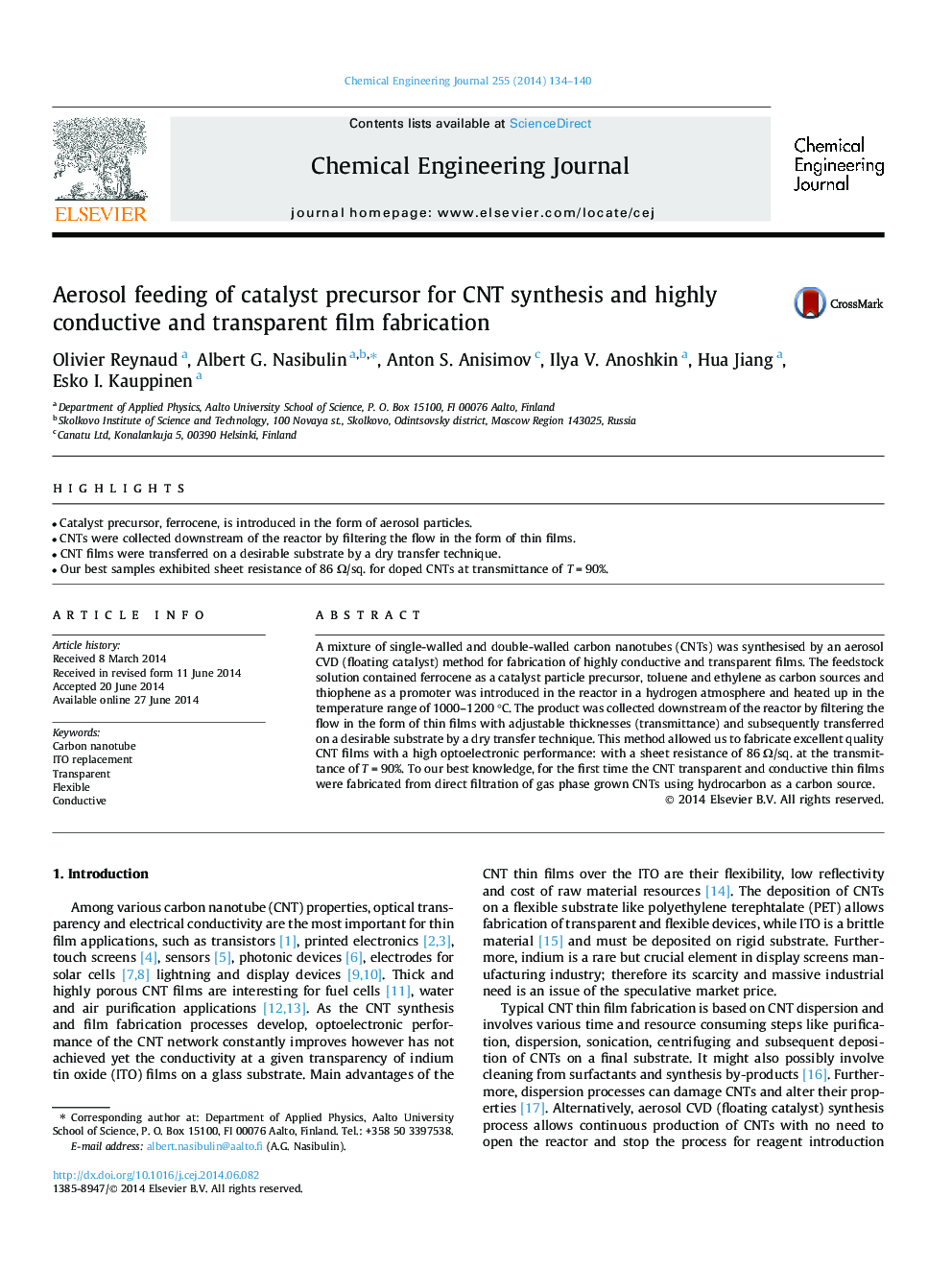| Article ID | Journal | Published Year | Pages | File Type |
|---|---|---|---|---|
| 147107 | Chemical Engineering Journal | 2014 | 7 Pages |
•Catalyst precursor, ferrocene, is introduced in the form of aerosol particles.•CNTs were collected downstream of the reactor by filtering the flow in the form of thin films.•CNT films were transferred on a desirable substrate by a dry transfer technique.•Our best samples exhibited sheet resistance of 86 Ω/sq. for doped CNTs at transmittance of T = 90%.
A mixture of single-walled and double-walled carbon nanotubes (CNTs) was synthesised by an aerosol CVD (floating catalyst) method for fabrication of highly conductive and transparent films. The feedstock solution contained ferrocene as a catalyst particle precursor, toluene and ethylene as carbon sources and thiophene as a promoter was introduced in the reactor in a hydrogen atmosphere and heated up in the temperature range of 1000–1200 °C. The product was collected downstream of the reactor by filtering the flow in the form of thin films with adjustable thicknesses (transmittance) and subsequently transferred on a desirable substrate by a dry transfer technique. This method allowed us to fabricate excellent quality CNT films with a high optoelectronic performance: with a sheet resistance of 86 Ω/sq. at the transmittance of T = 90%. To our best knowledge, for the first time the CNT transparent and conductive thin films were fabricated from direct filtration of gas phase grown CNTs using hydrocarbon as a carbon source.
